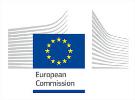Intellectual property statistics for decision makers
The 2022 IP Statistics for Decision Makers (IPSDM) conference took place on 14-15 June in Warsaw, Poland. The event was jointly organised by the Polish Patent Office (PPO) and the OECD, with the financial backing of the European Commission, and support from the Polish Ministry of Economic Development and Technology. In light of ongoing international travel restrictions, the event was held in a hybrid format, combining an in-person conference experience with a virtual component.
The conference was a unique opportunity to discuss IP-related issues and brought together high-level policy experts, top academics and representatives from the private sector. As in previous editions, the focus was on how IP data, statistics and analysis can be used to inform decision-makers in both the public and private sectors, and to identify key data needs. Participants discussed advances in the analysis of intellectual property rights statistics, and the role that these knowledge-based assets may play in shaping innovation, competition, business strategy and dynamics and, more generally, economic performance.
Plenary sessions were dedicated to the following topics. Click to download the session presentations (.zip)
- 1. Standard essential patents
- 2. IP strategies of SMEs
- 3. COVID-19 and dissemination of essential medicines
- 4. IP and green transition
- 5. The innovation gender gap
- 6. Innovation, IP and firm competitiveness
The conference was preceded by a PATSTAT Database introduction for beginners and an IP data workshop on 13 June.
Organisers
Event organised by:
 |
 |
In co-operation with the OECD-led IP Statistics Task Force: APO ▪ CIPO ▪ EPO ▪ Eurostat ▪ ILPO ▪ IMPI ▪ INAPI ▪ INPI (FR) ▪ IP Australia ▪ IPO(UK) ▪ IPONZ ▪ IPOS JPO ▪ KIPO ▪ NSF ▪ OBI ▪ UIBM ▪ USPTO ▪ WIPO
The conference benefitted from the financial support of the European Commission and the Polish Ministry of Economic Development and Technology.
 |
 |
|
Contact: ipsdm@oecd.org


